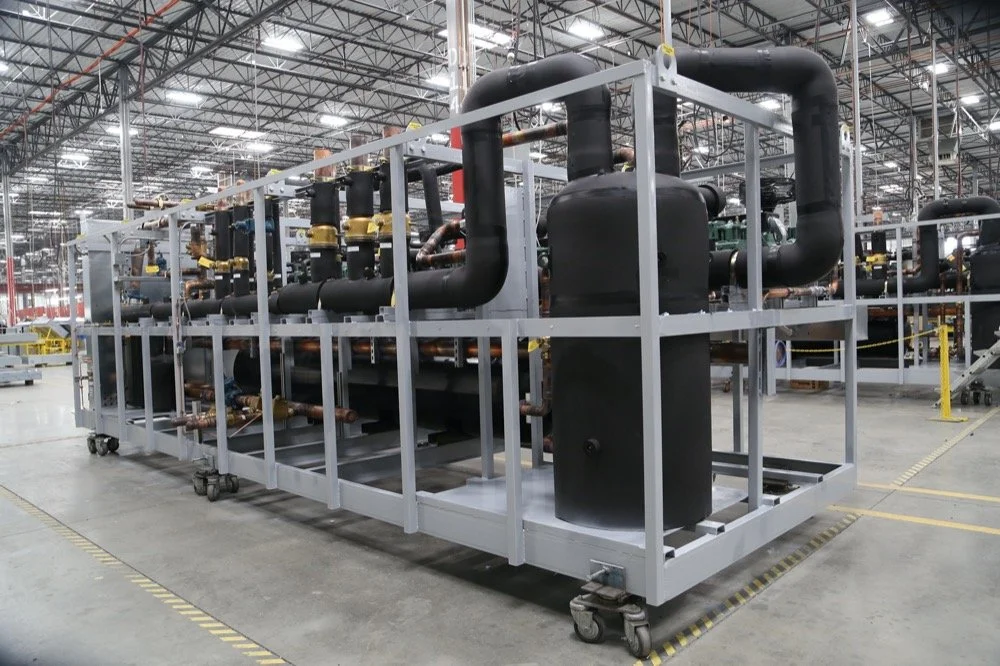Supermarket Rack System Maintenance: What to Check Quarterly
If a supermarket is a living system, the rack room is its heart. When it’s healthy, dairy holds 0–4 °C without drama, frozen cases sit at −18 °C, alarms stay quiet, and hydro bills don’t creep. When it’s not, you feel it first as little frictions—cases that “won’t quite pull down” after restock, a compressor that runs hotter than memory, night curtains that somehow stopped saving you money. A quarterly maintenance rhythm isn’t busywork; it’s how you trade small, predictable touchpoints for big, unpredictable failures.
Start Where the Data Lives
Before anyone picks up a wrench, open the controller trends. Look for drift: are medium-temp circuits spending more of the day above setpoint than they did last quarter? Did defrost events extend by a few minutes on average? Did condenser fan speeds or head pressure targets change with the weather but never quite come back down? Trends tell you where to look next. If case temperatures are steady but energy rose, the issue is usually on the heat-rejection side; if energy is flat but temps wobble, suspect airflow and defrost on the sales floor.
The Rack Room Story You’re Trying to Confirm
In a well-tuned HFC/HFO rack, return gas arrives cool and dry, compressors pull steady amps without chatter, discharge lines are hot but not scorching, and oil behaves—quiet inside the separator, a calm ½–¾ in the sight glass.
Liquid leaving the receiver is confidently subcooled—enough (think the “teens” in Kelvin) that it stays liquid all the way to the EEV/TXV under typical loads. When any part of that story breaks, symptoms echo everywhere: foamy oil means floodback upstream; chronic bubbles at the sight glass point to charge, heat-rejection, or a drier loading up; a noisy contactor or heat-marked lug hints at future nuisance trips right when you least want them.
Sales Floor: Airflow is King
Most “mystery temperature” calls resolve to air. Product pushed into a honeycomb, a quiet fan you don’t notice until you listen for it, a night curtain that looks closed but leaks just enough to load the coil with frost by morning. Fix airflow first, then re-evaluate superheat and defrost. Adjusting valves to compensate for starved air is how you convert a simple fix into a chronic one.
CO2 Levers
Transcritical racks add a few levers—gas-cooler approach, high-pressure/flash-gas valve stability, floating receiver—but the plot is the same: keep heat rejection efficient, keep liquid stable, keep oil uninteresting. If trends hunt, tune PID and verify sensors before you chase charge; clean the gas cooler like religion.
After a proper quarterly, stores feel different: cases hit setpoint with less effort, defrosts end decisively, the rack sounds even, sight glasses are boring, and nuisance alarms go quiet while the hydro graph slopes down. Payback comes from unsexy wins—coil cleaning, night-curtain fixes, gaskets/anti-sweat logic, probe calibration, restored subcooling—each delivering immediate kWh savings and fewer emergencies, turning “creeping drift” into predictable operations when aisles are full and doors never stop opening.
When to Brings In a Supermarket Technician
When the rack room keeps stealing your attention from the floor. If case temps wobble after restocks, alarms flare during peak hours, or the hydro bill climbs despite “nothing changing,” you’re past the DIY threshold. CO₂ racks with hunting valves, gas-cooler approach creeping up, or subcooling that won’t stay in the teens are all signals you need dedicated eyes. Staffing gaps matter too: if your best people are juggling customer ops, vendor calls, and late‐day triage, every minute spent chasing airflow, defrost, or oil return is opportunity lost. Compliance pressure is another tell—when CFIA/HACCP logs become a scramble instead of a routine, it’s time to move the risk off your plate.
Because stability compounds. We run quarterly PM as a closed loop: trends first, airflow/defrost second, valves last so fixes stick and energy drops. Our techs treat subcooling and approach temperature like vital signs, keep oil boring, and tighten the electrical hygiene that prevents “Friday 5pm” failures. You get fewer emergencies, cleaner audits, documented setpoints that survive shift changes, and a single point of accountability across coils, controls, and cases (HFC/HFO and CO₂). In practice, that means tighter case temps, quieter alarms, and a hydro graph that slopes down not because of magic, but because the fundamentals are finally handled every quarter. When uptime, cost control, and compliance matter more than babysitting racks, hand it off: book a 10-minute triage call for your store in Oshawa, Whitby, Ajax, Pickering, New Market, Mississauga Brampton, Toronto or Scarborough and we’ll map the fastest wins.

